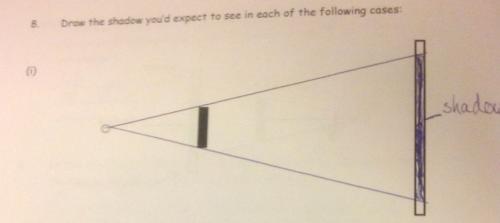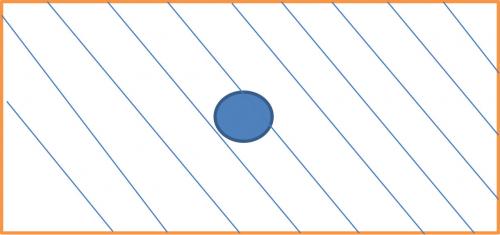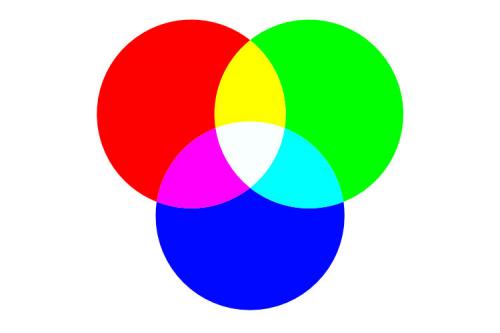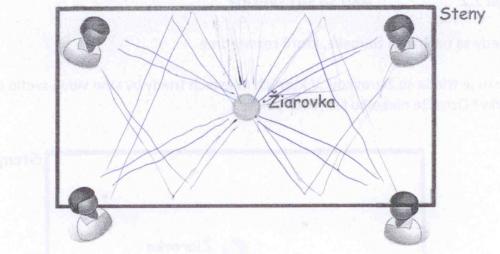In the Light SAILS inquiry and assessment unit, students examine the physical properties of light and its interaction with materials in a predominately qualitative fashion. A series of eight activities are described that aim to develop students' understanding of the concept of light and its characteristics. Students are facilitated to identify that sources of light have specific physical characteristics and these can determine the properties of light, such as its colour and intensity. Students can investigate the interaction of light with matter and explore phenomena such as reflection and refraction. The unit activities are presented as a guided inquiry-based approach and an individual student worksheet is provided for each activity.
This unit presents several opportunities for the assessment of different inquiry skills, and in particular, planning investigations, developing hypotheses, forming coherent arguments and working collaboratively. In addition, students can develop their scientific reasoning and scientific literacy skills. The assessment methods used across the activities of the unit include teacher observation, classroom dialogue, student worksheets and self-assessment.
This unit was trialled by teachers in three countries – Ireland, Greece and Germany, as described in the four case studies (students aged 12-18; mixed ability and gender). The teaching approach adopted was guided inquiry in all cases. The assessment of forming coherent arguments is described in all of the case studies, and in addition planning investigations, developing hypotheses and working collaboratively were assessed in some classes. Two of the teachers assessed scientific literacy (explaining concepts scientifically) and one teacher assessed the student's scientific reasoning (making reasoned decisions)
- Sources of light
- Representation of how light travels
- Shadows, and what determines the size of the shadow on a screen
- Composition of white light, primary colours and the effect of filters
- Reflection and image formation in plane mirrors
- Refraction and image formation in lenses
- Lower
- Upper
- Planning investigations
- Developing hypotheses
- Forming coherent arguments
- Working collaboratively
- Scientific reasoning
- Scientific literacy
- Classroom dialogue
- Teacher observation
- Self-assessment
- Worksheets
The teaching and learning activities described in the Light SAILS inquiry and assessment unit were developed by the FP7 ESTABLISH project, http://www.establish-fp7.eu/resources/units/light and adapted for use in the SAILS project. The unit develops in eight parts (activities A-H), in which students are introduced to a range of concepts and ideas, such as classification of objects by optical characteristics, physical properties of light (colour, intensity), shadows and light that cannot be seen by the naked eye. This information can be built upon to address the concept of light as a wave and representation of light waves as rays. Students are encouraged to consider mirrors and lenses and the way light acts (reflection and refraction). Finally, students examine white light, looking at combination of colours, primary colours, filters and lenses.
There are opportunities throughout this unit for the development and assessment of inquiry skills. Evidence of both content knowledge and skill development can be collected in the form of dedicated student worksheets for each activity, through teacher observation and self-assessment. While some assessment tools (3-point rubrics) are described within this unit, teachers are free to devise and implement their own assessment instruments. Suggested skills to be assessed during implementation of this unit include developing hypotheses, planning investigations, and scientific literacy. In particular, criteria for making judgements on six of the main skills encountered in this unit are outlined.
Below you can find the full inquiry and assessment unit for download, as well as an archive with classroom materials, including student worksheets and assessment tools for teachers to be used during the activities if available.
Unit booklet Classroom materials| Concept focus |
Sources of light
|
| Inquiry skills focus |
Forming coherent arguments
|
| Scientific reasoning |
Identifying light sources
|
| Scientific literacy |
Reviewing prior knowledge
Understanding the properties of light
|
| Assessment methods |
Classroom dialogue
Worksheets
|
| Concept focus |
Light is a wave
|
| Inquiry skills focus |
Forming coherent arguments
|
| Scientific literacy |
understand that light is a wave, that light reflects from walls, and that how light can be modelled using rays
|
| Assessment methods |
Classroom dialogue
Worksheets
|
| Concept focus |
Shadows are the absence of light
|
| Inquiry skills focus |
Planning investigations
Forming coherent arguments
|
| Scientific literacy |
Understanding shadows and what determines the size of a shadow on a screen
|
| Assessment methods |
Classroom dialogue
Worksheets
|
| Concept focus |
White light as a mixture of colours
Use of filters
|
| Inquiry skills focus |
Developing hypotheses
Forming coherent arguments
|
| Scientific literacy |
Understanding how concepts relate to real world context
|
| Assessment methods |
Classroom dialogue
Worksheets
|
| Concept focus |
White light as a mixture of colours – primary colours
|
| Inquiry skills focus |
Forming coherent arguments
|
| Scientific literacy |
Explain phenomena scientifically
Identify the real-world context of concepts
|
| Assessment methods |
Classroom dialogue
Worksheets
|
| Concept focus |
Light rays travel in straight lines
Plane mirrors reflect light
Angle of incidence equals the angle of reflection
|
| Inquiry skills focus |
Developing hypotheses
Forming coherent arguments
|
| Scientific literacy |
Understanding the real world context of this topic
|
| Assessment methods |
Classroom dialogue
Worksheets
|
| Concept focus |
Understanding refraction
Understanding that light can be reflected from and transmitted through an interface
|
| Inquiry skills focus |
Forming coherent arguments
|
| Scientific literacy |
Explain refraction scientifically
|
| Assessment methods |
Classroom dialogue
Worksheets
|
| Concept focus |
Exploring lenses
|
| Inquiry skills focus |
Developing hypotheses
Forming coherent arguments
|
| Scientific literacy |
Explain phenomena scientifically
|
| Assessment methods |
Classroom dialogue
Worksheets
|
This unit was trialled in three countries, producing four case studies of its implementation (CS1 Ireland, CS2 Ireland, CS3 Greece and CS4 Slovakia). All the case studies were implemented by teachers who had some experience of teaching through inquiry but the students involved had generally not been taught through inquiry.
CS1 Ireland, CS2 Ireland and CS3 Greece involved lower second level students: CS1 Ireland was a class of 22 girls working in groups of three, CS2 Ireland was a class of 22 boys aged working in pairs and CS3 Greece involved a mixed gender class of 24 students working in groups of three or four. These case studies describe double lesson periods, approximately 80 minutes each for CS1 and CS2 (both Ireland), and 120 minutes for CS3 Greece. The students in CS4 Slovakia were a class of 28 mixed ability and mixed gender upper second level students aged 17-18 years old, working in groups of two or three, and the case study describes a single 45 minute lesson.
Through the four case studies, details of assessment are provided for the four key SAILS inquiry skills, namely developing hypotheses, planning investigations, forming coherent arguments and working collaboratively. Some teachers also found this unit useful for assessment of scientific literacy, looking at students' ability to explain the concepts of light using scientific terminology. The main methods of assessment were classroom dialogue, where the teacher could provide formative feedback on the fly, and evaluation of students' worksheets, often using rubrics to distinguish performance levels.
The inquiry approach adopted by the teachers was a guided inquiry approach, with students completing the activities being guided by the questions in the worksheet and the teacher’s questions. All students completed the activities working in small groups and peer discussion was encouraged and facilitated. Teachers observed that the worksheet questions encouraged interactive discussion among students. Teachers circulated between groups probing student conceptual understanding through directed questions to individuals.
Within the four case studies, the inquiry skills of planning investigations, forming coherent arguments, developing hypotheses and working collaboratively were assessed in different ways, with some teachers using the rubrics proposed in the original unit. Additionally the content knowledge and evidence of scientific reasoning/literacy was assessed through the student worksheets and verbal responses.
Below you can find the full inquiry and assessment unit for download (excluding the case studies), as well as an archive containing all the case studies.
Unit booklet Case studies| Concept focus |
Sources of light
Understanding shadows
|
| Activities implemented |
What are sources of light?
Understanding shadows
|
| Inquiry skills assessed |
Developing hypotheses
Forming coherent arguments
|
| Assessment methods |
Classroom dialogue
Worksheets
|
| Level |
Lower
|
| Age |
13-14
|
| Prior experience with inquiry |
No experience
|
| Concept focus |
Developing inquiry skills
|
| Activities implemented |
What are sources of light?
How does light travel?
Understanding shadows
Exploring white light and filters
|
| Inquiry skills assessed |
Forming coherent arguments
|
| Scientific reasoning |
Argumentation
|
| Scientific literacy |
Explaining concepts scientifically
|
| Assessment methods |
Classroom dialogue
Worksheets
|
| Level |
Lower
|
| Age |
13-14
|
| Prior experience with inquiry |
No experience
|
| Concept focus |
White light and primary colours
|
| Activities implemented |
Exploring white light and filters
Exploring primary colours
|
| Inquiry skills assessed |
Planning investigations
Forming coherent arguments
|
| Scientific reasoning |
Drawing conclusions
Making comparison
|
| Assessment methods |
Classroom dialogue
Teacher observation
Worksheets
|
| Level |
Lower
|
| Age |
12-13
|
| Prior experience with inquiry |
No experience
|
| Activities implemented |
How does light travel?
Understanding shadows
Exploring refraction
|
| Inquiry skills assessed |
Forming coherent arguments
Working collaboratively
|
| Scientific reasoning |
Making reasoned decisions
|
| Scientific literacy |
Application of scientific concepts
|
| Assessment methods |
Classroom dialogue
Self-assessment
Worksheets
|
| Level |
Upper
|
| Age |
17-18
|
| Prior experience with inquiry |
Some experience
|




